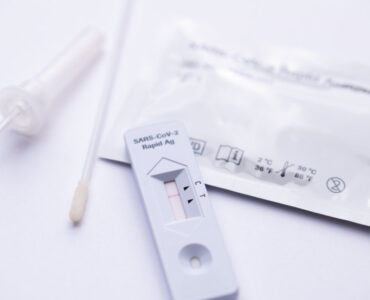Medical device translation services are key for medical device manufacturers, regulatory consultants, healthcare providers and clinicians, notified bodies and regulatory authorities, distributors and Clinical Research Organizations (CROs). Whether it’s user manuals, Instructions for Use (IFUs), or product labels, these translations ensure that medical devices can be safely and effectively used by healthcare professionals and patients in different regions. Accurate translation is critical, as errors in translated medical device documents can lead to serious consequences, including regulatory fines or, worse, harm to patients. In this guide, we will outline the key considerations and best practices for companies seeking medical device translation services.
Understanding Medical Device Translation Requirements
Medical device translation is subject to stringent regulatory standards in different regions worldwide, ensuring safety, usability, and compliance with local laws. In the United States, the Food and Drug Administration (FDA) mandates that medical devices marketed in the U.S. must include clear and comprehensible English labeling. For devices intended for bilingual or multilingual populations, translations into other languages may also be required, particularly for user manuals and patient-facing materials.
In the European Union (EU), the Medical Device Regulation (MDR, Regulation (EU) 2017/745) requires that medical devices be accompanied by translations into the official languages of the member states where the device is sold. This ensures that instructions for use (IFU), labeling, and safety information are accessible to both healthcare professionals and patients in their native languages. The MDR introduced more stringent post-market surveillance and documentation requirements, making translation accuracy even more critical for ongoing compliance.
Similarly, regions such as Asia, Latin America, and Canada have their own language requirements for medical device labeling and documentation. For example, Canada requires that all labeling for medical devices be available in both English and French, while Japan, China, and other countries in Asia typically require translations into their respective official languages. These translations must be precise to meet the local regulatory standards and ensure device safety.
Non-compliance with these language and regulatory standards can lead to significant penalties, including fines, delays in product approval, product recalls, or even denial of market entry. Manufacturers must also ensure that translations are updated to reflect any changes in device function, safety, or regulatory status, as failing to do so can have serious legal and financial consequences.
To ensure that translations meet the necessary regulatory standards, it is critical to work with a translation provider familiar with the specific regulations for each target market. This not only ensures compliance but also guarantees that end-users—healthcare professionals, technicians, and patients—receive clear and accurate instructions on how to safely and effectively use the medical devices.
Key Documents for Medical Device Translation
Medical device translation involves a wide range of documents that must be accurately translated for different stakeholders. Some of the key documents include:
- Instructions for Use (IFUs): These are perhaps the most critical documents requiring translation. IFUs provide detailed instructions on how to use a medical device, and errors in translation can lead to misuse and safety risks.
- User Manuals and Operation Guides: These documents provide comprehensive information on the functionality, troubleshooting, and maintenance of medical devices.
- Product Catalogs and Brochures: For marketing purposes, product literature must be translated to effectively communicate the benefits and specifications of a medical device to healthcare providers and patients.
- Clinical Trial Documents (e.g., Informed Consent Forms): If the medical device is involved in clinical trials, any documents related to the trial must be translated for participants in non-English speaking regions.
- Software Localization: Many medical devices include software interfaces. These user interfaces (UI) must be localized so that users can interact with the device in their native language.
Ensuring Quality and Accuracy in Medical Device Translation
Quality and accuracy are crucial in medical device translation due to the highly technical nature of the content. To ensure high standards, translation providers should follow these best practices:
- Use of Subject-Matter Experts (SMEs): Translators working on medical device documents should have expertise in the relevant field, such as biomedical engineering, medical technology, or clinical medicine. This ensures they are familiar with the technical terms and industry-specific language.
- Compliance with Standards: There are various quality standards that pertain to medical device translation. Notably, the ISO 17100:2015 standard outlines best practices for translation services, ensuring that translations meet the necessary quality requirements. The ISO 18587:2017 standard is for post-editing of machine translation output, which can be relevant to medical translation when organizations use machine translation for cost or speed and require professional review to ensure accuracy. When choosing a translation provider, identifying a provider that has a qualify system compliant with industry standards may can help ensure quality control and compliance.
- Certificate of Accuracy: Many regulatory authorities require a certificate of accuracy for translated documents, attesting that the translation is faithful to the original. This certificate is particularly important for official documents like IFUs or clinical trial agreements.
- Back Translation and Validation: In some cases, regulatory bodies may request a back translation, where the translated document is translated back into the original language by a separate translator. This helps verify that the translation accurately reflects the original document.
Managing Multilingual IFUs and Layout Requirements
Medical device companies often need to translate IFUs into multiple languages, especially when marketing their products across Europe or Asia. In some cases, translated IFUs may need to be published in a single booklet that includes instructions in as many as 30 different languages. This requires careful planning in terms of layout and design.
For example, the European standard EN ISO 15223-1:2021 specifies the symbols that must be used in medical device labeling, and these symbols must be correctly integrated into the translated IFUs. Additionally, the layout of the IFU must be consistent and clear, allowing users to easily find instructions in their language. A professional translation provider can assist with page layout and formatting to ensure compliance with these standards.
Challenges of Localizing Medical Device Software
Many modern medical devices include software components that require localization. This can include everything from a user interface (UI) on the device itself to external mobile apps or computer software used for device management. Localizing medical device software involves more than just translating text—it also requires adapting the software for the cultural and linguistic context of the target market.
Common challenges in localizing medical device software include ensuring that the translated UI remains intuitive and that technical terminology is accurately translated. A translation provider with expertise in software localization can help streamline this process by ensuring that the localized software is both functional and culturally appropriate.
Use of Translation Memories
Medical device manuals and documents need to be updated frequently. That’s why you need to make sure that your LSP is using translation memories and termbases. Efficient us of TMs and termbases will not only promote consistency in use of language, it will help save you a lot of money in future revisions. Make sure that your translation provider uses a TM and obtain the TMs from the LSP once the translation has been delivered. This will make you less dependent on any specific translation company.
Meeting Regulatory Requirements for Global Markets
Navigating the regulatory landscape for medical device translation can be complex. Each region has its own specific requirements for medical device documentation and labeling, and non-compliance can delay the approval process or result in penalties. In addition to the European Union’s MDR and the FDA’s requirements, regions like Japan, China, and Brazil have their own translation mandates for medical devices sold in their markets.
It’s essential to work with a translation provider that is experienced in these regulatory frameworks and can ensure that translated documents meet the necessary standards. This includes staying up to date with changes in regulations and providing the necessary documentation, such as certificates of accuracy, to satisfy regulatory requirements.
Proven Track Record and Client References
When selecting a translation provider, it’s important to evaluate their experience with medical device projects. A provider with a proven track record of handling similar projects can offer peace of mind that they understand the unique challenges of medical device translation.
Ask for references or case studies to see how the provider has handled large-scale translation projects in the past. Look for examples where they have successfully translated IFUs, clinical trial documents, or product catalogs into multiple languages for well-known medical device companies. This can give you confidence that the provider is equipped to handle your translation needs effectively.
Conclusion
Accurate medical device translation is essential for regulatory compliance, patient safety, and the successful global distribution of medical devices. By choosing a translation provider with subject-matter expertise, a commitment to quality, and experience in navigating regulatory requirements, medical device companies can ensure that their documents are translated accurately and efficiently. Following the guidelines outlined in this post will help ensure that your medical device translations meet the highest standards of accuracy, safety, and compliance.




